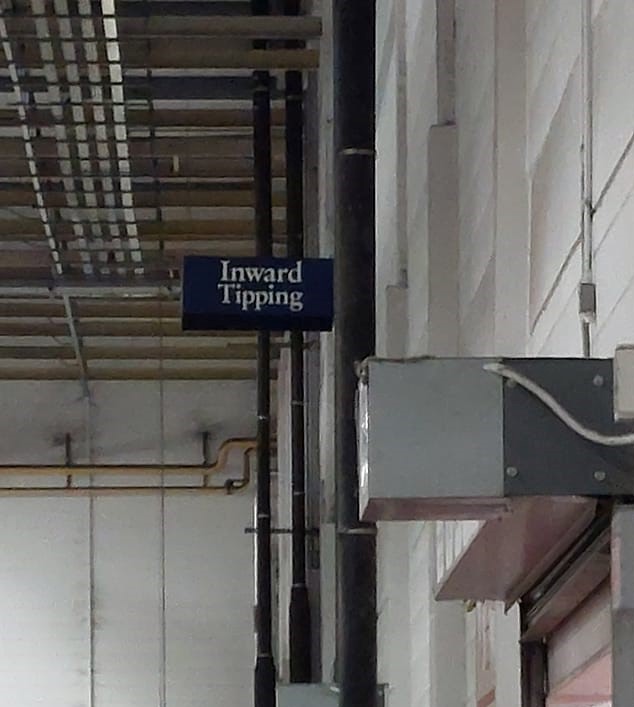The value of integration
I saw this sign in a warehouse directing people to ‘Inward Tipping’ and it got me thinking. I have spent many years firstly training for, building up to, and then waiting for my assessment as a certified trainer in NVC. Now that the event has taken place and I have been recommended, I find myself feeling a little lost. I have so many plans to put in place, so many exciting projects to bring to the world, but nothing is flowing right now and I am contemplating instead the value of taking time to integrate.
The sign in the warehouse was in the area where work arrives on a lorry and is organised before being despatched back out again on different lorries. This work is normally referred to as inbound or arrivals. I have never seen it referred to as ‘Inward Tipping’ before. Lorries come in, they are tipped, that is why it is referred to as tipping, but given that is also my surname, I was struck by the sign.
Going inward
At first I saw it as a description, I am introverted, I could relate to being an ‘inward Tipping’. I am not generally shy, I just need a huge amount of solitude to balance out even a small amount of time spent in company. That is why driving trucks at night has suited me for so long. I am being paid to think, to reconnect with myself and all that is. As I set off on a journey of 2 hours or more, I find myself breathing a sigh of relief and can feel my head taking time to put itself back together after the busyness of outward life. I read the sign initially as a celebration of that process. A few days later, I was sitting in Quaker meeting. I had done a night shift the night before and had not slept so found myself reading Advices and Queries to stay awake. No. 3 includes the following lines:
Do you try to set aside times of quiet for openness to the Holy Spirit? All of us need to find a way into silence which allows us to deepen our awareness of the divine and to find the inward source of our strength. Seek to know an inward stillness, even amid the activities of daily life.
Twice in one paragraph it uses the word ‘inward’. At that moment I experienced the sign, not as a description of how I am generally, but as an instruction of where I need to go now.
It is not enough to simply spend time alone, if all that time is spent beating yourself up about all the things that you are not doing. You are not getting the value of going inward, if what you are thinking about is all the things that you need to do outward.
Integration as active process
So how does one go about integrating? For me it is about noticing which elements of life are coming to mind, and then fully experiencing everything that thought is trying to tell you. Now, when I think about the assessment event and certification, I fully take time to celebrate all the work that has gone into it, the wonderful connections I have made and the beautiful sense of achievement of having chosen a path, worked for it and arrived at this stage with it. When I think about the courses I am designing for women in male-dominated industry, I am not planning the specifics for now, I am encouraging myself to fully connect with the living energy of what I want to contribute – the experience of wholeness, of walking towards a new way of being with joy, of changing the world for the better through compassion, connection and choice. Lesson plans, marketing strategies and sign up forms can wait. For now, I am just hanging out in the beauty and joy of life so that when the time comes, I can move forward from a place of groundedness.







